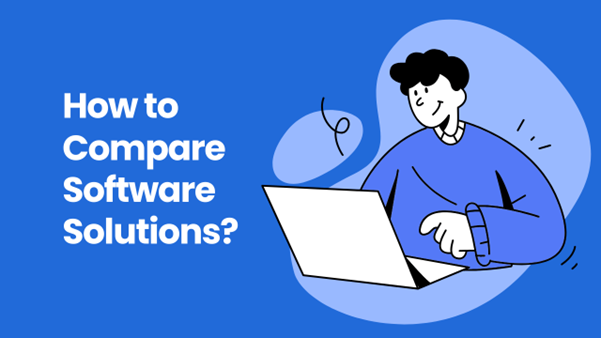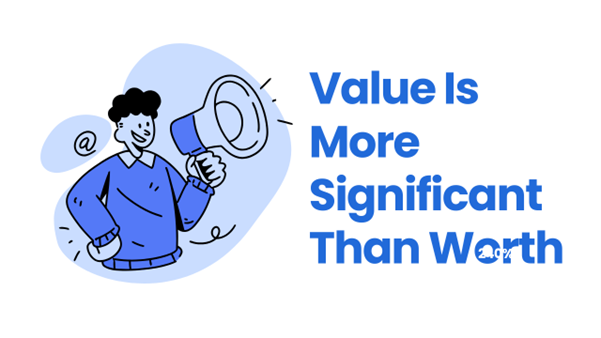Selecting the appropriate software isn’t a technology decision, it’s one that will shape a business, a project for decades down the line. What’s the difficulty? Every software application asserts itself as the ideal one. But peel away the glitz, and they weren’t all born the same. We all know what you’re experiencing if you’ve ever attempted comparing software that all sound and look identical. There’s a system for doing this, one that’s systematic, people-focused, and need-driven.
Let me take you through the way that works for me, based on what’s proven effective in actual settings.
Start with the Messy Part
No comparison tool, no demo software will help you if you don’t know what problem you’re solving. I always start by creating a brutal list of what the software must do — no filters, no “maybe later.” Everything from “must integrate with X system” to “must be accessible on mobile” goes on that list. Only after everything’s laid out do I narrow it down to the non-negotiables.
This simple step usually smashes a lot of hidden assumptions. I once worked with a team convinced they needed a full analytics platform. But when they spelled out what they actually needed, it boiled down to scheduled reporting and a clean UI. That’s it. No bloated software, no wasted money. Same logic applies if you’re trying to boost engagement on a project like a YouTube channel — you don’t always need a complicated growth hack. Sometimes, a sharper move is to buy YouTube likes to hit your goals faster and trigger the algorithm the right way.
Look Past the Glitzy Extras
It’s so easy to get bogged down in feature-by-feature analysis. The vast majority don’t need to be done. I’ve found the way forward lies in making a plain comparison table: a plain grid with tools down one axis and essential features down the other. Then mark which ones indeed provide.
What matters here is honesty. Just because a tool is popular isn’t always a sign that it will be a good tool for you. I once chose a lesser-known CRM over a so-called industry elite based solely on the reason that it had a faster onboarding experience, and that mattered for my team of students.
Do Not Minimize the Handle’s Texture
Next, after finishing the features, I focus on the user experience. That’s one thing that may not get on the spec sheet but makes all the other things matter. Does it make sense the way you get around? Does it act as your team expects?
I have seen students abandon great tools because the UI had become outdated or cluttered. On a recent project, the application with the greatest “features” proved the most painful to use, and that resistance sapped productivity more than we could have hoped.
And make sure the software will get along with the tools you already use. Integration isn’t a nice-to-have but a dealbreaker. Outsourcing software development services can help with integrating new solutions into your existing tech stack more efficiently and with fewer internal bottlenecks. Companies like Intellias India specialize in providing tailored solutions for these types of integration challenges.
Trust Is Established
It’s counterintuitive, but one consideration among the things that the tool will be compared against when I compare it involves how open a tool appears. Not in marketing, but in users, reviews, and the volume of actual discussion around it. A platform’s social proof can be telling.
For instance, I analyze numbers such as site traffic, actual end-user feedback, and, when possible, people’s public interaction figures. A company with healthy YouTube metrics on their tutorials or tutorials indicates to me that people are indeed utilizing and learning with the product. That’s more convincing than any business award.
It’s not popularity for popularity’s sake, it’s a question of searching for evidence of a living, supported system.
Value Is More Significant Than Worth
It’s here that things get tricky. Low cost often does not equal value. And high cost often does not equal quality. You want long-term return.
Ask yourself, what’s the full cost? Is onboarding covered? Will you have to pay extra later on for integrations or more users? I had a “discount” device one time that wound up costing me more money over the long haul because it had so much in the way of add-ons and installation time.
You need to consider scale as well. Will you still be utilizing this solution six months down the line, or will you have outgrown it and need to move all your equipment?
Trust After First Trying
It’s the one thing that I never skip. Whether a piece of software appears excellent or not, test drive it, be it a free trial version or a demonstration installation. That’s the only way the good and the bad get revealed.
A case in point: a student mentee who had been attracted by a flashy LMS. She tried it out and found it didn’t include some accessibility features that were critical to the users. She’d swapped over for a more plain-looking but more accessibility-compliant one, and that suited them much more in the end.
Also, don’t test in a silo. Get your team in early if you have one. I would get at least two members of the team to test as a user. It’s quite astonishing how different perspectives among users will have different strengths and weaknesses.
Decision Time: Take Emotion Out of the Equation
When deciding, I have a scoring system. Each tool gets scored against the criteria that we determined: features, useability, integrations, value, and support. I have a “following the gut” one as well, though, you don’t want to ignore your instincts, but they’re not all that you do want to take into consideration.
In the end, the right response should be the one that’s appropriate. It should reduce your stress, not create more. The more structured your comparison, the more you’ll be sure you’re making a decision, not a wild guess.
FAQs
What’s the biggest mistake people make when comparing software solutions?
They start with brand names or reviews without first defining their specific needs. This usually leads to a mismatch between expectations and reality.
How many tools should I compare before deciding?
Three to five is a manageable range. Any more and decision fatigue kicks in. Any fewer and you might miss better options.
What if the perfect tool doesn’t exist?
It probably doesn’t. The goal isn’t to find a flawless solution—it’s to find the best fit for your workflow, priorities, and growth plans.
 logo
logo



